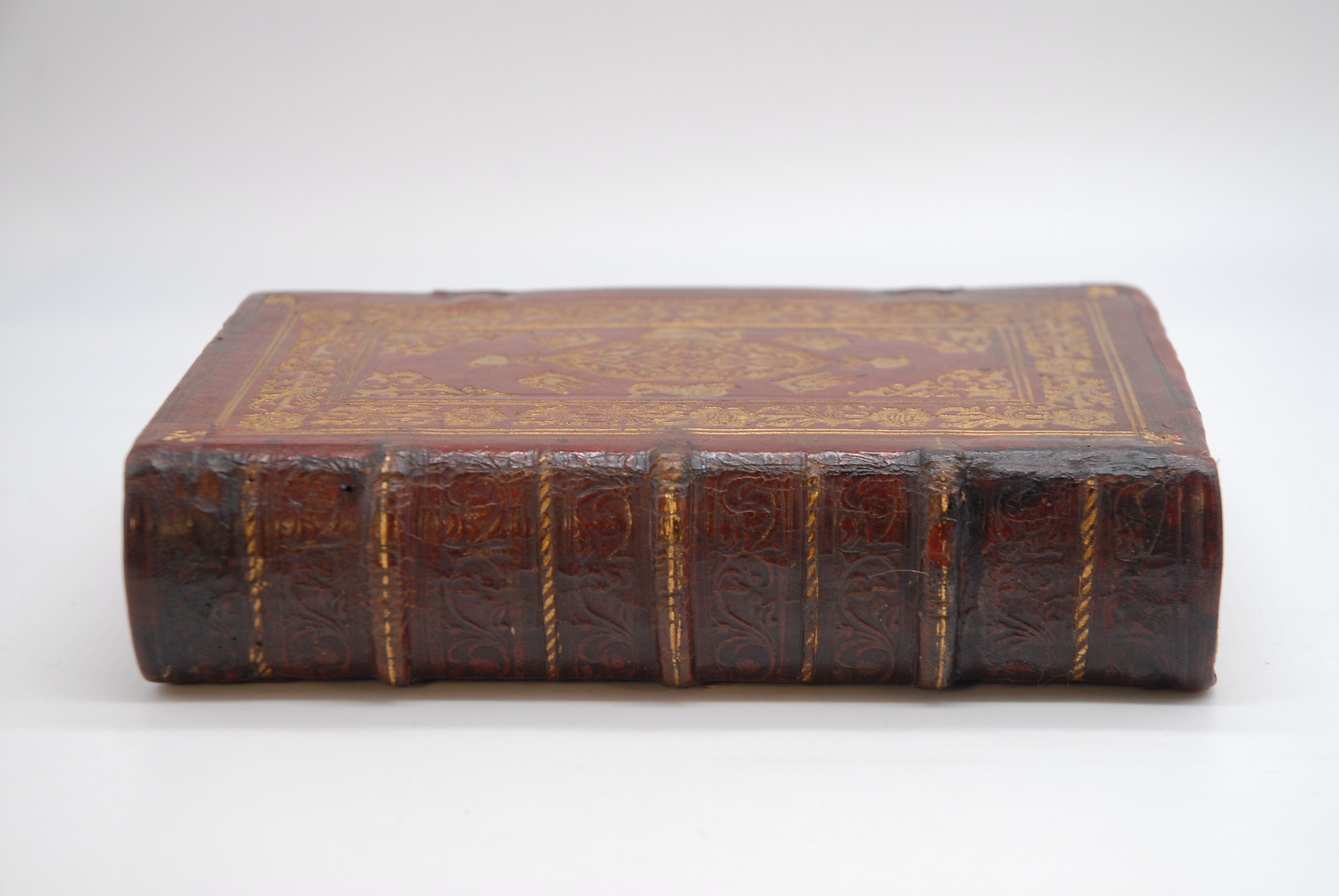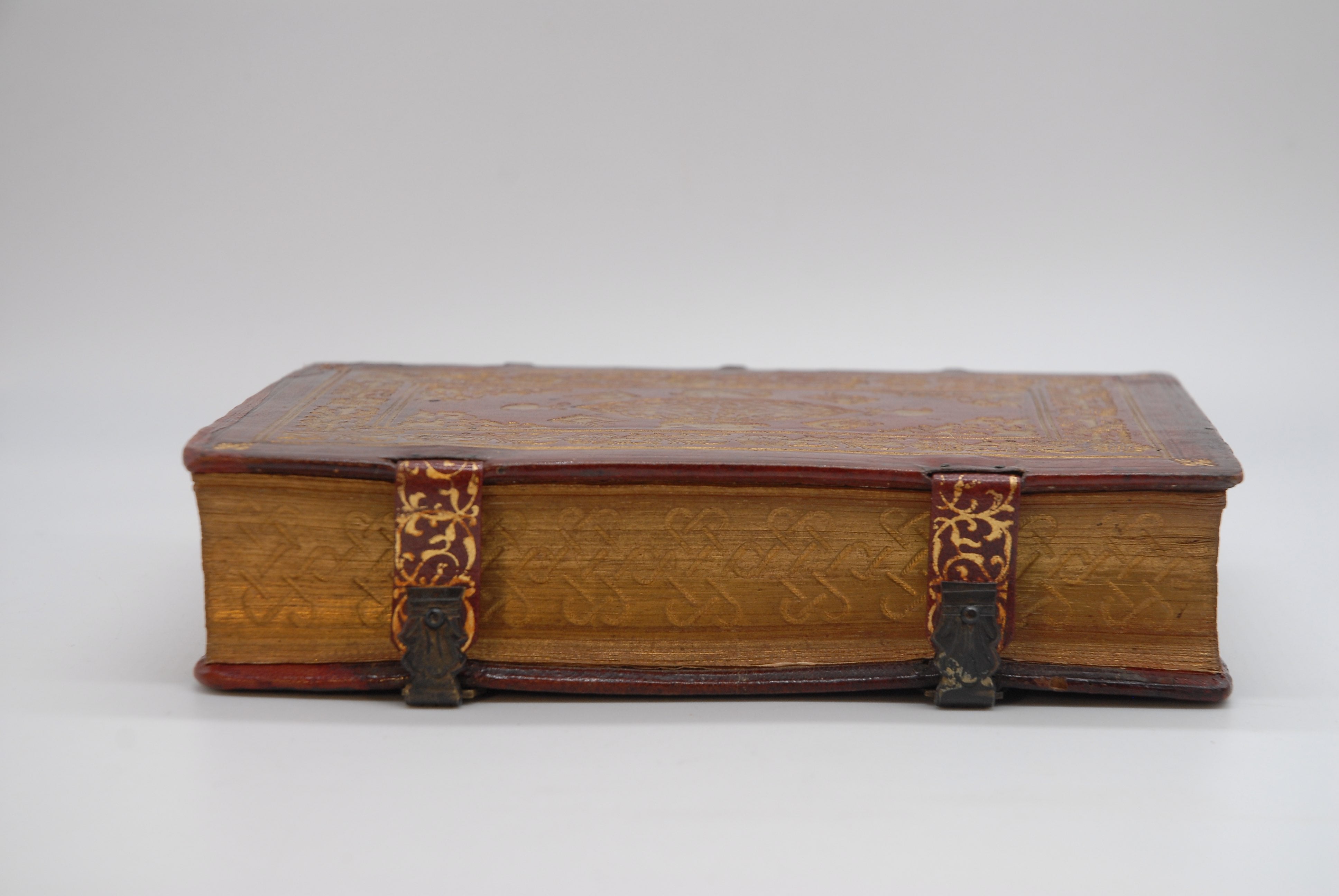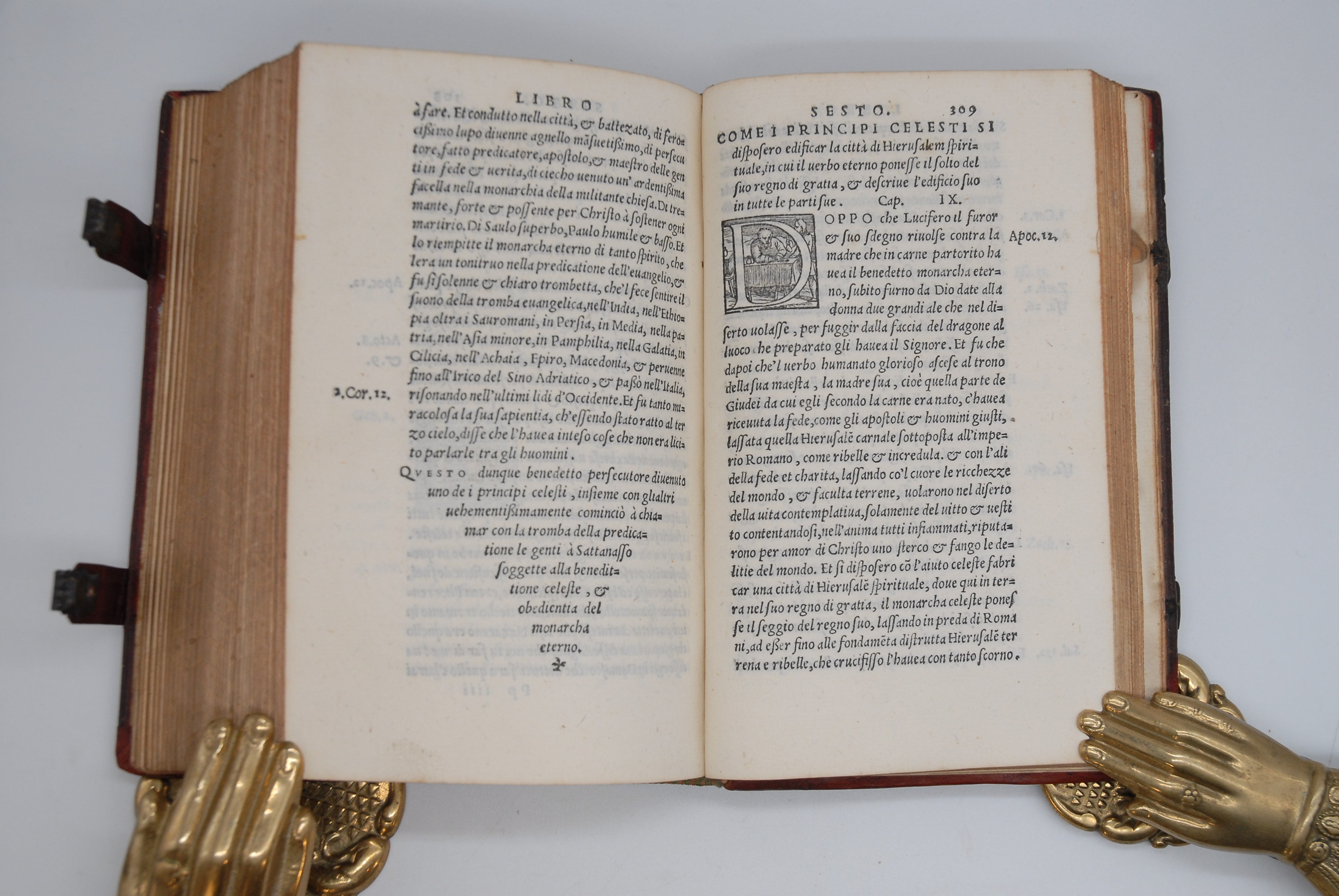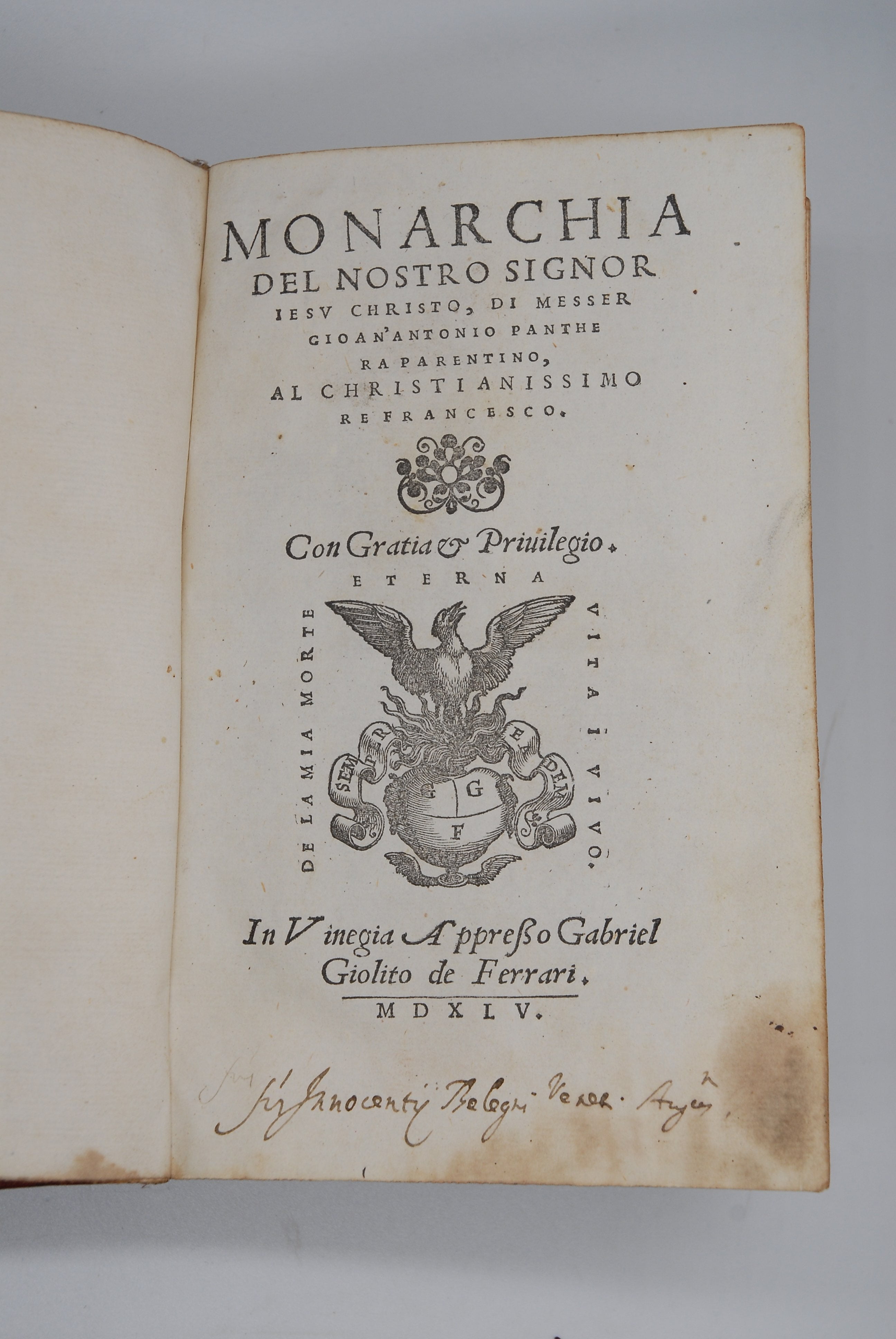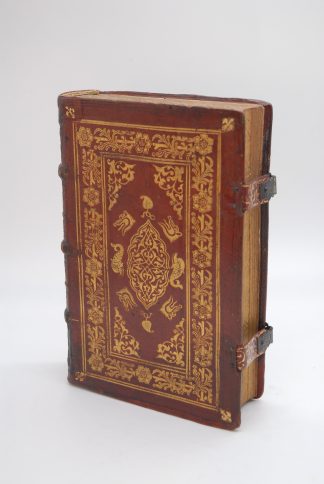PANTERA, Giovanni Antonio.
EXQUISITE VENETIAN BINDING
La Monarchia del nostro signor Jesu Christo.
Venice, Gabriel Giolito de Ferrari, 1545£9,500.00
FIRST EDITION. 8vo. Ff. (xx) 337 (iii). Italic letter. Printer’s phoenix device to tp, repeated larger on verso of last, historiated initials, ornamental head and tail pieces and ornaments. Early ms to foot of tp ‘Sum Innocenti Belegni Venet Augus’. Lower outer cover of first few leaves a little ink soiled, rust stain from upper rear clasp to blank fore edge of final leaves, very occasional little ink spots. A good clean copy in exquisite contemp. gilt Venetian binding, stylistically similar to several Aldines, in red morocco with gilt embossed floral and phytomorphic motifs within two rectangles, wolves heads and dolphin motifs surrounding central lozenge, spine with eight alternating compartments restored over head and tailbands, tiny restoration to one raised band, minor old repairs to upper inner corners, couple of tiny worm holes in spine, clasps with gilt ornamentation, edges with richly gauffered ropework gilt, matching ties.
Exquisitely bound in beautiful Venetian gilt morocco, Giovanni Antonio Pantera’s colourful biblical narrative was inspired by the Apocalypse of St John. This first edition was immediately popular and reprinted several times. Because of the book’s controversial central prophecy which predicted a utopian millennium where all wars ceased and religious conflict would be no more, it became the target of significant attention by inquisitors and censors during the Reformation. Indeed, the Venetian, Sistine and Sistine-Clementine indexes had listed it as a forbidden work. Pantera’s life is shrouded in obscurity, but it seems he was an Italian bishop and the present work was his only publication. It is organised into six books with a total of 181 chapters describing the struggle between God and the Devil. It is halfway between a theological treatise and spiritual tale. The work has a notably pro-French emphasis; presumably to encourage greater alliance between Henry II and Paul III. Although Pantera was a Catholic, he writes of a religion that avoided unnecessary ceremony and focuses on the almighty power and good of Christ. The Christo-centric approach was in line with other similar publications in Venice during the period. Pantera’s central message is clear: the human race is hopeless without the worship and reverence of Christ.
The impressive binding is Venetian with a central arabesque lozenge surrounded by dolphin, wolves heads and apple tools with ornate tools to each corner, possibly with later regilding, with a fillet border and an exquisite rose design around the central motifs. Fleur de lis designate each corner and the page edges are cut with a repeating rope design in gilt, two gilt and metal clasps retain their original function. The dolphins indicate a Venetian binder, but the wolves heads are a very unusual and striking motif. Comparable examples can be found in De Marinis, border Vol II 2162, corners 1880 and wolf heads 1271, 1281.
BM Stc It p. 488; This ed. not in Adams, Brunet.In stock





